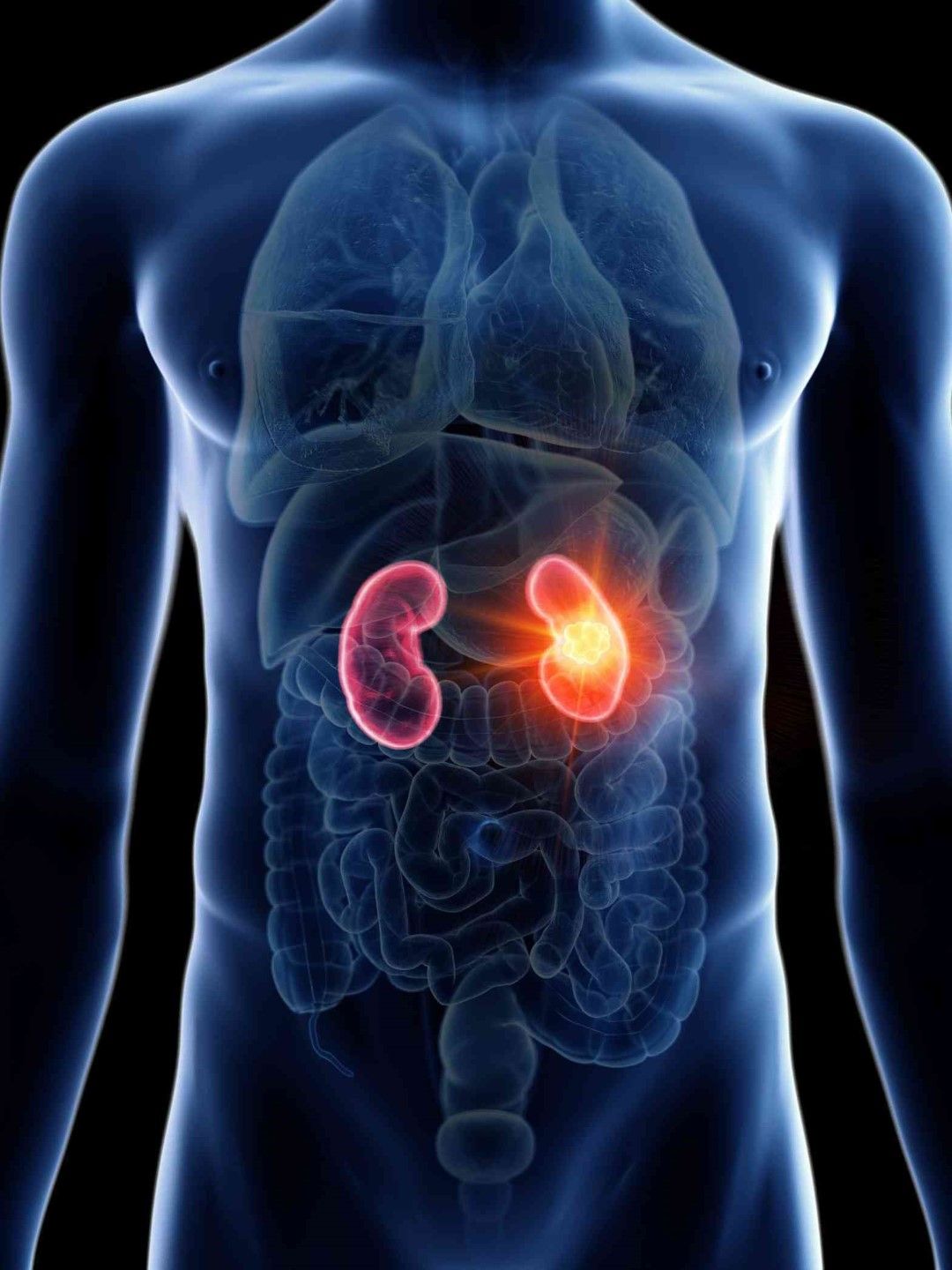Kidney stone disease (KSD) — commonly known as “kidney stones” — is a chronic condition characterized by the formation of salt deposits in the form of stones in the kidneys, urinary bladder, ureters, and urethra. Most often, kidney stone disease develops in one kidney.
Urolithiasis is asymptomatic, which poses a danger to everyone. Men and women of any age are at risk, but special attention is given to the elderly. In older people, urolithiasis occurs due to age-related factors, when calcium in the body does not settle in the bones as frequently but remains in the blood, which triggers the formation of stones. Urolithiasis manifests as a severe attack of pain that is difficult to manage, so treatment must be started fairly quickly. Urolithiasis is a common disease, so prevention is essential for both men and women at any age.
Urolithiasis is the formation of stones from salt compounds in the urine. The disease can occur for several reasons:
- a physically inactive lifestyle, which contributes to the stagnation of urine and blood, leading to the development of urolithiasis in the kidneys;
- gastrointestinal disorders caused by improper nutrition. Urolithiasis occurs in people who consume large amounts of meat products, cheese, and alcohol;
consumption of large quantities of calcium-containing products, which directly contribute to the formation of kidney stones. Particular attention should be paid to the water consumed, which may contain high levels of minerals, salts, and metals that pose a risk of developing urolithiasis; - vitamin D deficiency;
- changes in the body’s water-salt balance, especially as a result of food poisoning;
- abnormalities in the development of the excretory system, which are initially a risk factor for developing urolithiasis;
- internal inflammatory diseases that disrupt the body’s filtration function.
The main factor contributing to the development of urolithiasis is a disruption in the metabolism of minerals and an excess of calcium salts. Urolithiasis most often occurs in patients with thyroid disorders accompanied by hormonal imbalances, as well as in elderly people.
How kidney stones are forming

Urolithiasis begins with the formation of crystals from salts and minerals present in the urine. Crystallization occurs rhythmically, accompanied by certain factors that cause an excess of these substances. Urolithiasis develops due to provoking physical exertion, consumption of alcoholic beverages, as well as the intake of foods high in calcium salts. Urolithiasis is often the result of dysfunction in the excretory system, which contributes to the accumulation of these crystals, forming stones.
Urolithiasis also occurs as a result of physical factors such as urinary retention or incomplete emptying of the bladder. Urolithiasis develops due to calcium salts present in the urine, which can accumulate into crystals or grow on existing ones, as well as settle on the walls of the kidney or bladder.
Crystals (stones) initially form in the kidneys or bladder and can then be carried with urine into the ureters and urethra, causing severe pain for patients. Urolithiasis is diagnosed using a combination of specific methods, so it is important to consult a doctor in case of any pain in the kidney or groin area.
Symptoms of Urolithiasis
The symptoms are the same in men and women, but the pain syndrome depends on the course of the disease. Urolithiasis can manifest in completely different ways depending on the size of the crystals (stones), as well as their location and size. Urolithiasis is especially symptomatic when the stones move, causing poorly controlled renal colic.
Symptoms of kidney stones

- Severe pain that is dull and aching in nature. Kidney stones in the ureter cause colicky pain and may also be accompanied by blood in the urine.
- Urination disorders. Kidney stones in the bladder are accompanied by frequent urges to urinate, accompanied by sharp pain. If stones enter the urethra and block it, complete inability to urinate may occur.
Kidney stones have one symptom — acute pain syndrome. The pain spreads to the lower back and groin area. The patient’s condition sometimes becomes anxious and restless. Kidney stones, due to severe pain, can even cause gastrointestinal disturbances and sometimes nausea or vomiting.
In some cases, kidney stones can cause pain so intense that the patient loses consciousness, in which case medical attention should be sought immediately.
The Dangers of Urinary Stone Disease
Urinary stone disease can also be complicated by the presence of an inflammatory process. It can lead to the development of pyelonephritis, which, if acute, may progress to a chronic form. When urinary stone disease is combined with pyelonephritis, it can result in serious consequences such as bacterial shock, which is difficult to treat.
Urinary stone disease is dangerous because it often shows no symptoms during the formation of stones, so it is important to monitor any pain symptoms, avoid alcohol, and refrain from intense and sudden physical activities. Urinary stone disease is very insidious — the formation of stones occurs over a long period of time without any signs of the disease.
Diagnosis of Urolithiasis
Urolithiasis is diagnosed using a combination of specific methods based on the patient’s condition and complaints. The diagnosis of “Urolithiasis” is made exclusively by a nephrologist or urologist, although other doctors can suspect urolithiasis based on the patient’s medical history.
Since the acute onset of symptoms does not allow for a lengthy and thorough examination, doctors use a number of diagnostic methods that help accurately establish the diagnosis of “Urolithiasis.”
At the N. Lopatkin Scientific Research Institute of Urology and Interventional Radiology, urolithiasis is diagnosed using modern methods such as:
- laboratory tests of blood and urine to detect infection, inflammation, and the level of trace elements;
- ultrasound examinations of internal organs to identify pathologies and abnormalities in both women and men, sometimes this diagnostic method alone can establish the diagnosis of “urolithiasis”;
- MRI with contrast to detect pathological processes, their location, and extent;
- radionuclide studies to assess the functioning of the excretory system of the body, as an auxiliary method in diagnosing “urolithiasis”.
Urolithiasis is categorized based on the type of stones formed. Crystals, for example, consist of a collection of particles that do not contain calcium. In such cases, urolithiasis is not visible on an X-ray, and an ultrasound examination is performed.
After the diagnosis, the doctor prescribes treatment. Urolithiasis responds well to treatment; the key is seeking timely professional medical care.
Treatment of Urolithiasis
Urolithiasis can be treated both surgically and conservatively. At the N. Lopatkin Scientific Research Institute of Urology and Interventional Radiology, the necessary treatment is provided, taking into account the patient’s age, condition, and complications of the diagnosis of urolithiasis.
One of the methods of treating urolithiasis is the procedure of removing stones from the urinary tract. Wave therapy is used to break down salt deposits into a fine state (sand), which then passes naturally. Urolithiasis is easily treatable, and after the procedure, no long-term rehabilitation is required, allowing the patient to be discharged within a few days.
Urolithiasis requires a comprehensive approach to treatment. At the N. Lopatkin Scientific Research Institute of Urology and Interventional Radiology, the most advanced therapy methods are successfully applied. Among them:
- Extracorporeal lithotripsy is a procedure for removing stones from the urinary tract. During the procedure, stones are broken down into sand-like fragments by shock waves without making an incision. The tiniest fragments are naturally expelled from the body, and patients with kidney stones return to their normal life within just 2 days.
- Miniaturized percutaneous nephrolithotripsy is a procedure using a holmium laser designed to remove large and multiple stones. This treatment method is well tolerated by patients with kidney stone disease and helps to avoid complications.
Open surgical procedures for the treatment of “Urolithiasis” are not performed due to their invasiveness and long rehabilitation period.
Urolithiasis can also be managed conservatively. One method involves therapeutic administration of medications to reduce pain, antibacterial therapy, and diuretics. In some cases, urolithiasis requires additional support with medications.
Prevention is also important in urolithiasis. This includes following a special diet, which involves proper food consumption while excluding fried, salty, sweet, and smoked products from the diet.
In exceptional cases, treatment may include taking medications containing citrates to dissolve stones without external intervention, thereby subjecting urolithiasis to chemical treatment inside the body. To achieve the desired effect, a plentiful drinking regimen is essential.
Urolithiasis requires constant prevention, which involves proper nutrition and an active lifestyle. Kidney stones can affect a person at any moment, especially after heavy labor or exhausting work. Therefore, urolithiasis should be ruled out by any doctor you consult for help. Timely diagnosis will help avoid complications, as urolithiasis can be treated in some cases with medication.
To determine the possibility of treatment for stone removal, it is necessary to get a consultation at the Consultation and Diagnostic Center of the N. Lopatkin Scientific Research Institute of Urology and Interventional Radiology. After the consultation, it will be necessary to undergo an examination or additional tests, after which an interdisciplinary medical council will be held to decide on the chosen method of treatment.



